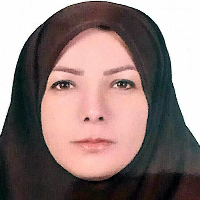The Analytic of Affecting indicators in smart city to reduce the risk of epidemic diseases (Covid-19)(Case study: New city of Baharestan, Isfahan)
The global outbreak of COVID-19 has disrupted the normal lives of citizens and the provision of services in cities around the world, and despite the guidelines and programs that cities have for emergencies; the widespread outbreak of the disease has left cities with a lack of capability and resources to deal with it. Hence, the prevalence of COVID-19 led to more emphasis on the role and importance of smart cities in dealing with and preventing crises. Because it combines the capabilities of the real and virtual world to solve urban problems. Therefore, the purpose of this study was to identify smart city indicators for reducing the COVID-19 risk. The present study is a descriptive-correlational and applied study that has been conducted using exploratory factor analysis with principal component analysis. The statistical population of this study is citizens living in the new town of Baharestan. Using available sampling method, 382 people were selected as sample members. The main tool for collecting information was a questionnaire. Descriptive and inferential statistics were used to analyze the obtained data. Findings from exploratory factor analysis led to the identification of three factors: smart services, smart health care and smart mobility. smart cities with the above three factors, have the ability to reduce the risk of corona and can play an important role in the optimal control and management of the situation in the event of such crises. Building smarter cities can support significantly better outbreaks and are crucial to saving lives. Evidence suggests that the risk of COVID-19 can be reduced with the help of smart city solutions. The need for smart cities is essential for the epidemic. COVID-19 epidemic has increased the demand for smart city and justified its existence.
-
Develop a native model of a creative tourism city; Case study of Babolsar city
Nedabeygom Sharifian, *, Amir Gandomkar, Mohammad Masuod, Hamid Saberi
Quarterly of Geography (Regional Planing), -
Investigating the factors affecting the socio-economic resilience of cities in the face of epidemics (case study: Shiraz city)
Mohammadreza Zamani, *, Zeinab Talebi
Research and Urban Planning,




